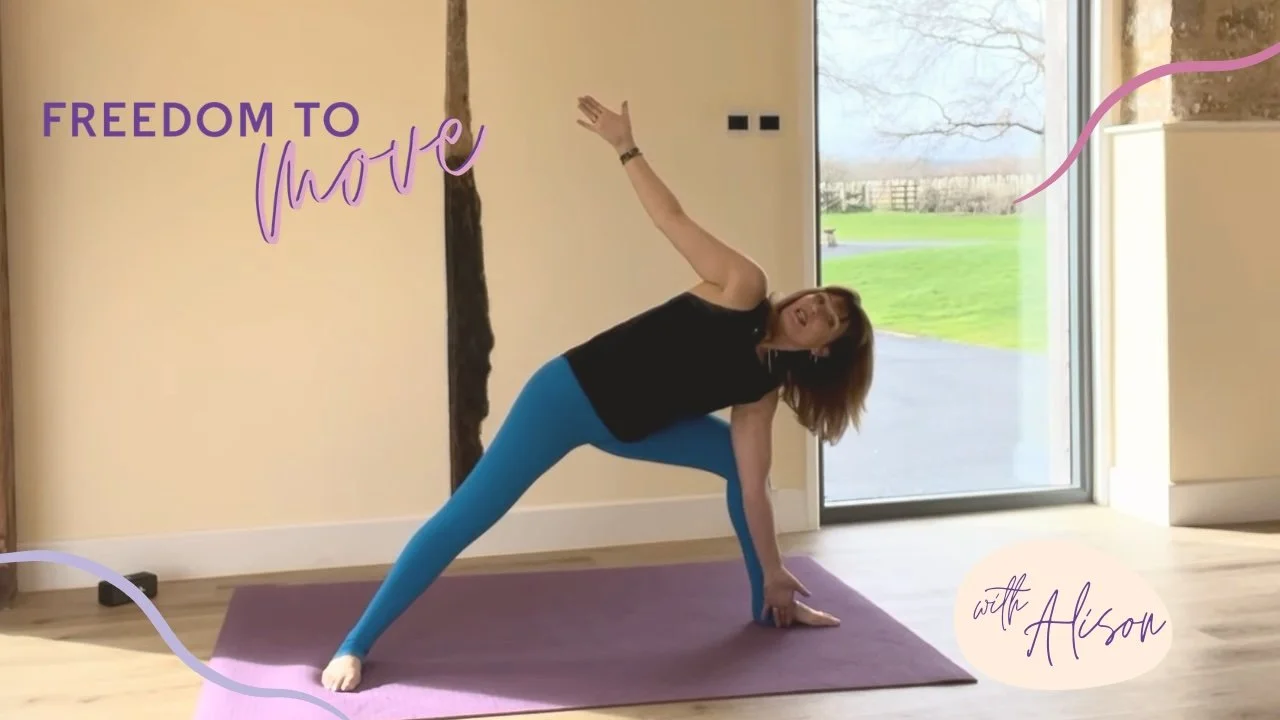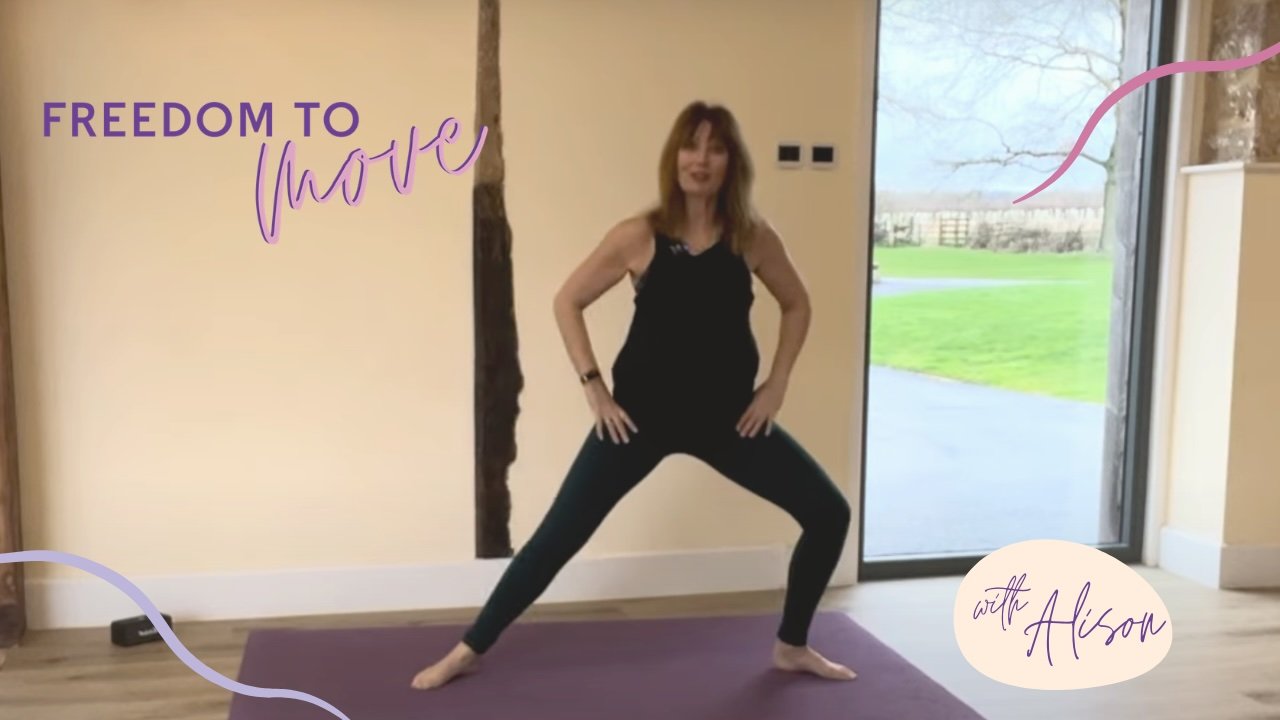Mobility, stretching and flexibility: what’s the difference and who needs it?
How to find your freedom to move
You know there’s more to your body, and to life, but you don’t really know where to begin. It feels like your body is holding you back; and you really sort of wish someone, somehow could breathe a new lease of life into your limbs (and creaking joints).
It’s time you start looking after yourself and showing your body some love. Feeling vital and alive is not just possible, it’s what you deserve. And that’s why you need to know about mobility, stretching and flexibility; they’re the key to that vitality and maintaining your momentum. This blog post is going to help clear up what these terms all really mean for you and what the benefits are. Plus, you’ll find 5 tips for your own mobility practice, as well as a special welcome to Feel-good Movement.
Who is mobility, stretching and flexibility training for?
Just about everybody (emphasis on the body, there) can benefit from mobility, stretch and flexibility training. But we’re not concerned with everyone else, we’re concerned with you. And this practice would especially benefit you because you:
Constantly feel stiff and tight, you creak, crack and groan every time you want to bend down and say hello to a new dog friend in the park.
Can’t quite get a full swing in your golf game because of your tight back.
Freeze when you realise you’ve tried to stand up out of your chair too quickly and panic that you’ll set off a twinge.
Often feel tired, sluggish and lacklustre.
This isn’t just, “how it is now”; you can feel good in your body and stand tall again. Yes, even if you’ve tried the gym sessions, pilates or yoga classes and they just didn’t work for you. And if you have a busy schedule, mornings or evenings are always a rush, you can still get that Feel-good feeling.
Mobility, stretching and flexibility training is actually easy and you can do it in as little as 10-15 minutes, but it’s not simply a case of doing a few stretches here and there and you’ll be all sorted. This needs to become part of your daily routine. It needs to become a habit. Feel-good movement makes this even easier; making it a lovely, confidence-building activity.
Give these quick videos a try and see the difference this approach could make to you.
What is mobility, stretching and flexibility all about?
Mobility
Mobility is the way you move your body without limitation. When you move with complete freedom and a full range in your joints, you have good mobility. This is not a set of tools or a specific exercise, it’s gentle movement and engagement of your joints. Remember, when doing mobility training you will be uncomfortable. The goal is to strengthen through to the end range and get your muscles working together. If you believe a healthy, functioning body is one that has the freedom to move, then you need mobility training.
Stretching
Stretching is about gently lengthening muscles, tendons, soft tissue (fascia), in the body, to improve flexibility, boost range of motion and give you a feeling of relaxation. It can be performed in lots of ways, static hold, dynamic moving, deep hold and passive stretching (for long periods of time). It’s an important component of your wellbeing and self-care: preventing injuries and supporting suppleness in the body.
It’s not true that:
Once you achieve flexibility, you can stop stretching.
Stretching takes too long.
I’ve noticed huge benefits myself from deep stretch, holding stretches, more dynamic stretching; this is a continuous practice and one that I can weave into my day with just 15 minutes if need be.
Flexibility
Flexibility is the ability of your body to bend, stretch and move freely in a wide range of motions. It’s about your muscles, joints, tendons etc. all being able to salsa and sashay with you as you dance around the kitchen with your favourite tunes on, without you getting injured or in pain. If you’re keen to reduce your risk of falls, keep moving and doing the things you love, you need some flexibility support. And flexibility maintains your mobility.
It’s not true that:
Flexibility is only for fit people.
Flexibility is inherited and cannot be improved.
Flexibility training is only about stretching.
You should push through pain during stretching.
Flexibility training prevents joint stiffness too, actually. And you should always listen to your body, and avoid overstretching.
Mobility, stretching and flexibility training is an important part of your overall health and wellness puzzle. Want to live life to the fullest? To move better. Train better. Stand better. Play sports better? You need mobility, stretching and flexibility training. Check out this very special movement session dedicated to supporting you in finding your own Freedom to Move.
The benefits of mobility, stretching and flexibility training
This is a more holistic approach, looking at your lifestyle, getting to grips with why you’re feeling stiff, and introducing more Feel-good movement to make a real difference in your body. Feel-good movers move more, take up new hobbies and walk taller, together.
This is a breath of fresh air for your whole body
One of my clients was struggling, she couldn’t reach back with her golf swing, then she joined the Feel-good community and everything changed. She even started taking the movement off the mat; incorporating stretches and exercises from class into her pre-round warm up and noticed how much freer her back felt, and how much more powerful her swing was.
5 mobility, stretching and flexibility training tips
1. Warm up first to boost your mobility
This really is important because it creates blood flow to the joints and muscles we’re going to work, so they feel more relaxed, and able to move more - with ease. Once they’re mobile and warm we can shift into the stretch more easily. This should include the 5 major joint areas: the shoulders, wrists, ankles, hips, spine and can look like doing some shoulder rolls, arm circles, hip circles and simple squats.
2. Before you move, stretch. After you move, stretch.
Build stretching into your practice both before and after movement. Whether it’s your golf game, weight training session, or a walk, your body will move better if you build stretching in.
Try this...
This is a simple stretch you can incorporate into your day - or try right now - while the kettle is boiling, pop your bottom against the wall or fridge, feet hip distance apart, slightly away from the wall and bend forwards to reach for your toes (it doesn’t matter if you can’t actually touch your toes, you’ll still get a good stretch). I bet that within a week of doing this, you’ll already feel a noticeable improvement; it might even become a cherished part of your day as you claim some space just for yourself. You’ll be adding a bit more Feel-good into your day, as well as freeing up your body and energy.
3. Focus on consistency.
Listen to your body and rest if you need to.
4. Keep hydrated.
There are so many benefits to building mobility, stretching and flexibility training into your life. It doesn’t have to take loads of time, it isn’t just for super fit people and it doesn’t have to be complicated.
To make dipping your toe in as easy as possible, I’ve crafted fun, community focused classes for the Feel-good Movement community, and there’s space for you to come and work to your ability, without judgement or worrying about your appearance. It’s all about your own journey to feeling good in your body and discovering joyful movement.





